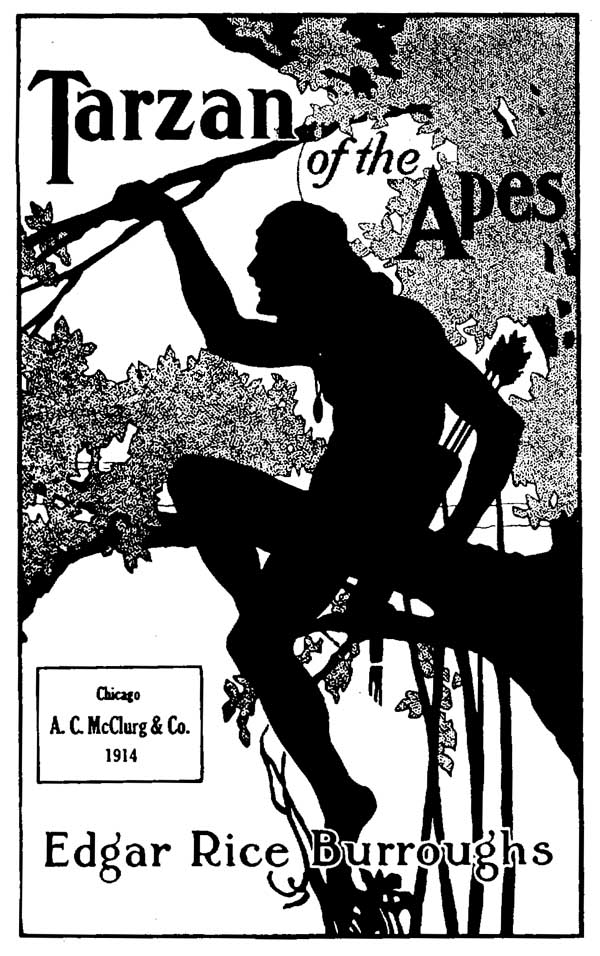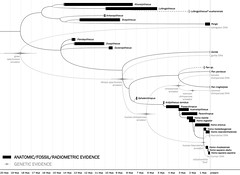A while back I started the March of Man project. The goal is to create a massive illustration of human evolution using hundreds of figures. My first attempt involved drawing them by hand on a big piece of paper. I think that lasted about a week.
My second attempt involved a rich web application, where people could submit image files according to certain specifications, and these would be incorporated into a big collage. This got a bit further, but went stagnant for a few reasons: 1) the application is a bit buggy and unwieldy (it was my first big Flex project), 2) drawing each figure still takes a while, and 3) I overestimated the amount of public interest there would be in contributing to this project. (Thanks to Steve O'Connor, though, for being the only other contributor!)
It's been a couple of years since I launched that site, and now I've started on a new method. Will it go anywhere? We'll see. It does solve some problems of the previous approaches.
This time, I'm doing it in 3D. The plan: 1) create a poseable model of an Ardipithecus ramidus female; 2) create morph targets for various other species, ages, and for males; 3) use this to create images for significant localities; 4) combine these into one vast mural.
So far I'm almost done with step #1. Here she is:
(Also posted on my sketch blog, Dragabok.)
Still have to tweak the hair a bit and make her poseable. After that, I've got my work cut out for me....
01 December 2009
The Mangani Clade
As I've mentioned earlier, the formal nomenclature for apes (including humans) is a huge mess. One person's "hominin" is another's "hominid" and my "hominine" might be your "homininan". And in this situation I honestly think the vernacular terms (adjusted in some cases to include humans) serve us better:
There is one possible vernacular term I've seen for this clade, and it comes from an unexpected source.

Tarzan is one of the most popular and enduring fictional creations of the 20th century. Everyone knows he was raised by apes—but what kind of apes? In various films they are depicted as gorilla-like (e.g., Disney's Tarzan) or chimpanzee-like (e.g., Greystoke: The Legend of Tarzan, Lord of the Apes). What were they in the novels?
The author, Edgar Rice Burroughs, never attempted to identify them scientifically. In the novels they have a primitive, guttural language, and they call themselves mangani. They are not gorillas, because they have another word for those (bolgani). Chimpanzees are never mentioned in the novels.
Interestingly, the mangani also use the word mangani for humans. For example, black people are gomangani and white people are tarmangani. So, in their own self-taxonomy, there is a group that includes themselves and humans, but excludes gorillas. Sound familiar?
The mangani can't be chimpanzees, because they are much larger (although less massive than gorillas). Like chimpanzees, they are fairly arboreal, but, unlike them, they do not use tools (apart from logs as drums, perhaps), do speak a language, and do not hunt cooperatively. Still, considering that chimpanzee behavior in the wild was virtually unknown when Burroughs was writing, and that chimpanzees were not thought to be closer to humans than to gorillas, perhaps he can be given some leeway here, since his prescience is otherwise impressive. (Especially given the recent discovery of a possible population of giant chimpanzees in the Bili Forest of the Congo.)
I'd love to learn of a good vernacular term for the human-chimpanzee crown clade, but until such a time as I do (or the formal nomenclature becomes actually useable), I like the idea of referring to humans, common chimpanzees, bonobos, Ardipithecus, "Lucy", Australopithecus, Floresian "hobbits", Homo erectus, Neandertals, etc. as "mangani".
- apes: gibbons, great apes
- gibbons (or lesser apes): Hoolock, Hylobates, Nomascus, Symphalangus
- great apes: African apes, Pongo
- African apes: Gorilla, Homo, Pan
There is one possible vernacular term I've seen for this clade, and it comes from an unexpected source.

Tarzan is one of the most popular and enduring fictional creations of the 20th century. Everyone knows he was raised by apes—but what kind of apes? In various films they are depicted as gorilla-like (e.g., Disney's Tarzan) or chimpanzee-like (e.g., Greystoke: The Legend of Tarzan, Lord of the Apes). What were they in the novels?
The author, Edgar Rice Burroughs, never attempted to identify them scientifically. In the novels they have a primitive, guttural language, and they call themselves mangani. They are not gorillas, because they have another word for those (bolgani). Chimpanzees are never mentioned in the novels.
Interestingly, the mangani also use the word mangani for humans. For example, black people are gomangani and white people are tarmangani. So, in their own self-taxonomy, there is a group that includes themselves and humans, but excludes gorillas. Sound familiar?
The mangani can't be chimpanzees, because they are much larger (although less massive than gorillas). Like chimpanzees, they are fairly arboreal, but, unlike them, they do not use tools (apart from logs as drums, perhaps), do speak a language, and do not hunt cooperatively. Still, considering that chimpanzee behavior in the wild was virtually unknown when Burroughs was writing, and that chimpanzees were not thought to be closer to humans than to gorillas, perhaps he can be given some leeway here, since his prescience is otherwise impressive. (Especially given the recent discovery of a possible population of giant chimpanzees in the Bili Forest of the Congo.)
I'd love to learn of a good vernacular term for the human-chimpanzee crown clade, but until such a time as I do (or the formal nomenclature becomes actually useable), I like the idea of referring to humans, common chimpanzees, bonobos, Ardipithecus, "Lucy", Australopithecus, Floresian "hobbits", Homo erectus, Neandertals, etc. as "mangani".
Labels:
anthropology,
nomenclature,
primatology,
taxonomy
20 November 2009
More Human Evolution Diagrams
I'm nearing the end of work on a review of the case for human evolution. I've uploaded some of the diagrams to my Flickr account before. Some of these were just updated and some new ones were added: see The Case for Human Evolution (Flickr set).
This is probably my favorite of the lot, showing the congruence between morphological/paleontological data (including radiometric dates) and genetic data (including molecular clocks):
Can you spot the single discrepancy? (No fair reading the caption on Flickr first.)
UPDATE: Revised some of the images, temporarily removed one.
Labels:
charts,
diagrams,
evolution,
illustration,
paleontology,
phylogeny
What I Do For a Living, Part 312: Dr. Facilier's Parlour
I recently completed a new application. This one is a collection of three games associated with Disney's upcoming animated film, The Princess and the Frog. This one requires a Facebook account: Dr. Facilier's Parlour. (Dr. Facilier is the villain of the movie.)
This is my first completed project using certain technologies:
Also see the Shadow Shakedown game therein for an example of how
I have to say I was very pleased with all of these new technologies. In particular, the Spark component set is a huge improvement over the previous Halo components. Skinning components is so easy now it's hard to imagine that it was ever difficult. Adobe has acted on the "Favor composition to inheritance" maxim, and it has paid off. Also, props to Code Igniter, with its flexible tools and strong emphasis on the MVC pattern, for making PHP development (something I had all but sworn off) actually kind of fun.
Enjoy!
This is my first completed project using certain technologies:
- Facebook API
- Spark components (Flex 4 beta)
- Code Igniter PHP framework
Also see the Shadow Shakedown game therein for an example of how
DisplacementMapFilter can be useful. (I also got to do a tiny bit of character animation there.)I have to say I was very pleased with all of these new technologies. In particular, the Spark component set is a huge improvement over the previous Halo components. Skinning components is so easy now it's hard to imagine that it was ever difficult. Adobe has acted on the "Favor composition to inheritance" maxim, and it has paid off. Also, props to Code Igniter, with its flexible tools and strong emphasis on the MVC pattern, for making PHP development (something I had all but sworn off) actually kind of fun.
Enjoy!
Labels:
ActionScript,
animation,
Facebook,
film,
Flash,
Flex,
PHP,
RIAs,
social media,
web applications,
work
07 September 2009
Glimpses of Stuff I've Been Working On
Two long-term projects of mine should see the light of day soon. Here are some previews (click to see full size):
Labels:
definition,
evolution,
MathML,
Names on Nodes,
phylogeny
24 August 2009
Online NEXUS File Viewer
It's been a month since my last post, but I have a very good reason for the hiatus. Namely, I was busy getting married to this woman (at the Los Angeles County Museum of Natural History) and going on our honeymoon (in Sydney, Australia).
Now that I'm back in California, time to get back to work on Names on Nodes! I've just put together a small demo of two key parts of its functionality: the reading of NEXUS files and the displaying of phylogenetic networks. Click here to see the NEXUS Viewer demo. This application opens NEXUS files and displays the trees in them as a combined phylogenetic network.
Things you need to know:
- You must have a NEXUS file stored locally on your computer to use this.
- That file should have a TREES section. (If not, the viewer should just display a list of operational taxonomic units.)
- This could get messy for NEXUS files with lots of trees. (Although it's kind of neat-looking.)
- You can move the nodes around by clicking on them, or click anywhere else to move the entire diagram.
- I would dearly love to know if, for some reason, it does not work for a given file.
Enjoy!
Labels:
ActionScript,
cladistic analysis,
evolution,
Flash,
Flex,
Names on Nodes,
personal,
phylogeny,
RIAs,
tools,
web applications
23 July 2009
Two "Names on Nodes"-Related Launches
I'm still a clear way away from launching the beta application, but I've just made a couple of launches related to my long-time work-in-progress, Names on Nodes.
First up, and probably of more interest to most people, I've begun the documentation for the MathML definitions used by Names on Nodes. The document includes general reviews of relevant mathematical and biological concepts, a quick review of MathML and the technologies it's based on, some comments on correlating mathematical and biological concepts, and definitions for all entities (including operations) used by Names on Nodes. Note that this covers a lot of the same ground as in my 2007 paper, with a few minor changes in the symbols and terminology (e.g., I now call the ancestor of a clade a "cladogen" rather than a "cladogenetic set").
Secondly, I've made the project open-source, by moving it to Google Code. If you are a developer interested in checking this out, go here. It's incomplete, so I don't know if anyone will have any real interest in looking at it yet. (Honestly, I mostly posted so that, on the off chance that I unexpectedly kick the bucket, my magnum opus won't be lost forever.)
This information is also on the new Names on Nodes home page.
Labels:
ActionScript,
databases,
definition,
Flash,
Flex,
Java,
mathematics,
MathML,
MXML,
Names on Nodes,
nomenclature,
open source,
phylogeny,
RIAs,
systematics,
taxonomy,
web applications,
XML
Subscribe to:
Posts (Atom)



